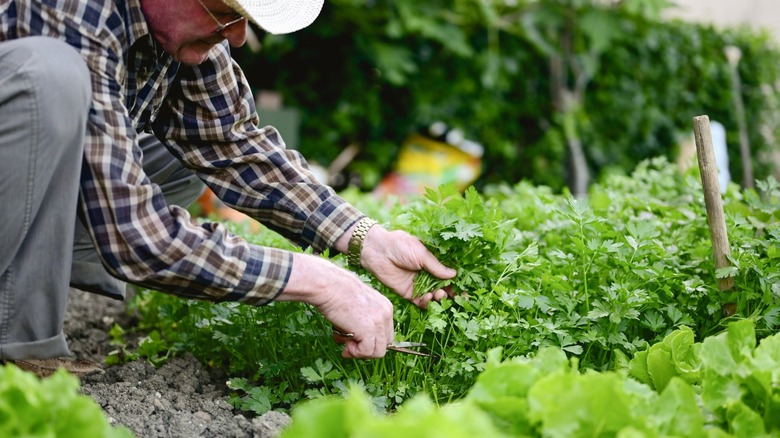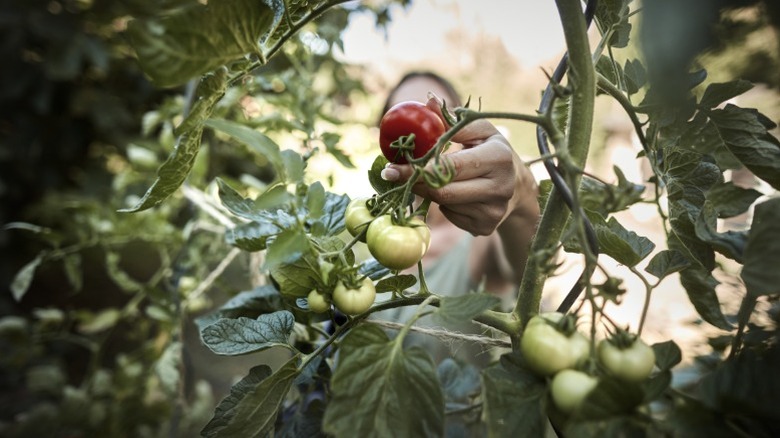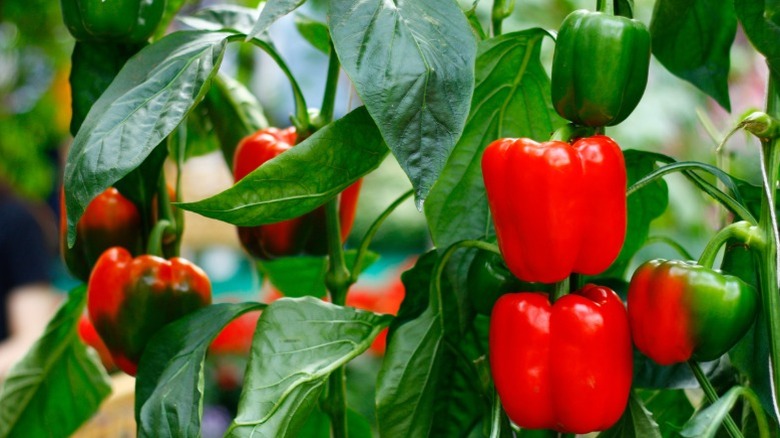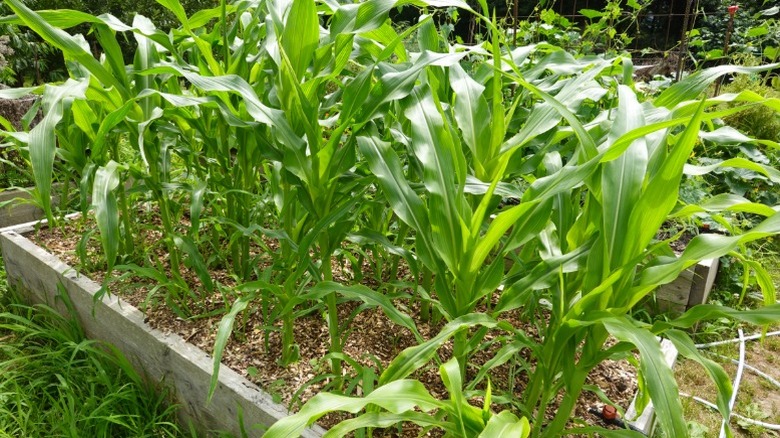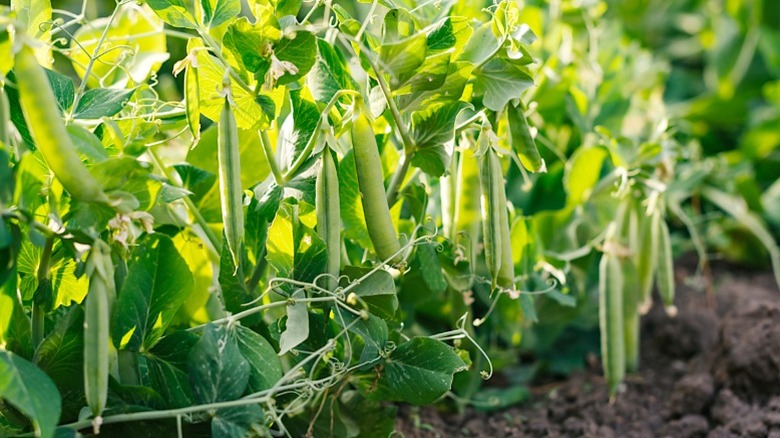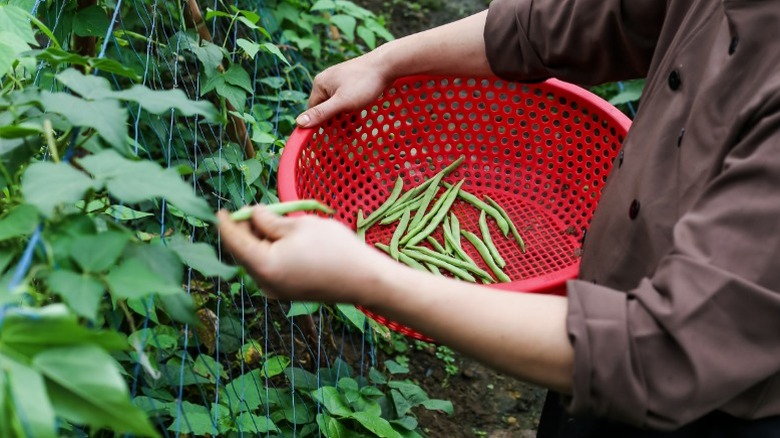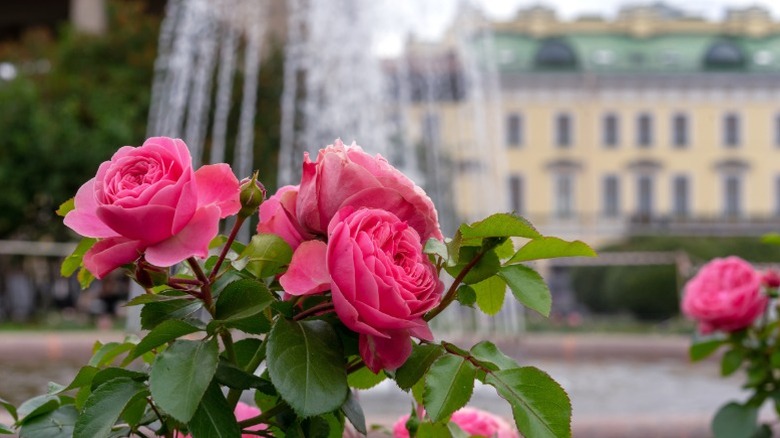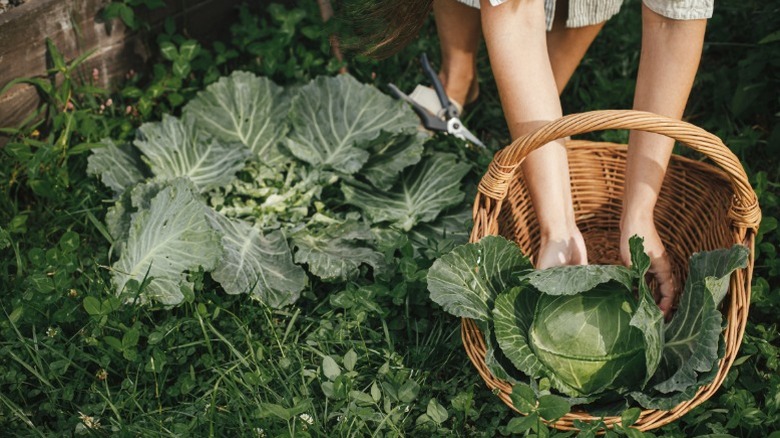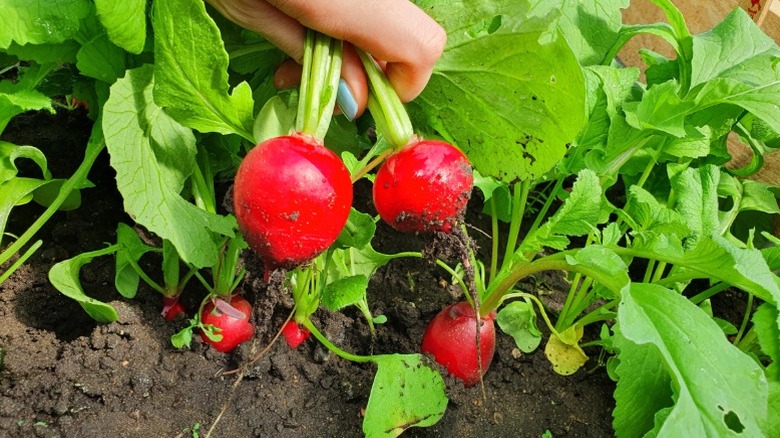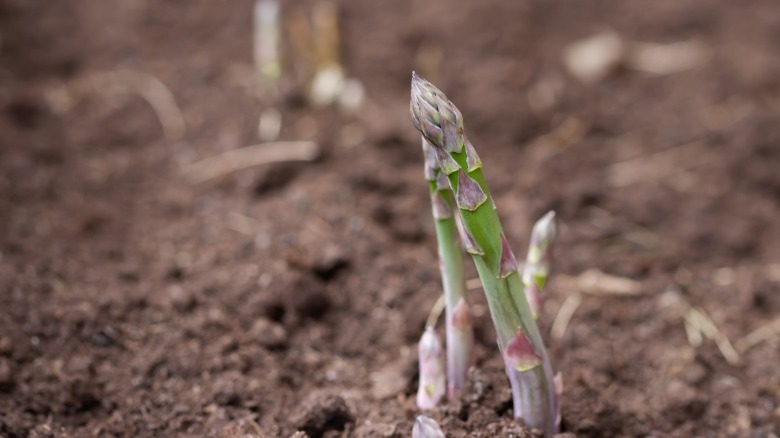9 Companion Plants That Thrive Next To Parsley In The Garden
Although many people choose to grow their herbs indoors in a countertop herb garden, you might miss out on many benefits if you don't plant them directly in the garden. For example, parsley (Petroselinum crispum) is an ideal companion for a variety of garden staples. Among the many plants that thrive next to it are corn, tomatoes, peppers, roses, and beans. Parsley helps its companions by attracting beneficial predator insects like tachinid flies, hover flies, and parasitic wasps, all of which feed on insects that normally damage garden plants. Grow parsley alongside many of these plants to take advantage of the insects' natural behavior.
Growing this fragrant herb in the garden does not require any special talent. Although technically a biennial plant, most gardeners will treat parsley as an annual, sowing it fresh in the garden year after year. Parsley needs well-drained soil with lots of rich organic material to thrive. Provide consistent moisture and full sun for the best growth and taste. Below, we take a deeper look at how to grow parsley alongside its ideal companion plants.
Tomatoes
Parsley is a great companion to plant near tomatoes in the garden. The herb should be situated close enough to the tomato plants to serve as ground cover for moisture retention. In return, taller tomato bushes can provide shade during the hottest part of the summer. Use parsley to attract insects, like hover flies, since they'll eat the aphids that prey on your juicy tomatoes in the summer. Parsley can also serve as a trap crop, keeping your tomatoes from getting infested by aphids.
Peppers
Although pepper plants should be spaced 18 inches apart, herbs like parsley can be planted closer because they don't grow as tall and won't compete for space. Planting parsley this way provides a natural sort of ground cover to help with moisture retention. Planting parsley near pepper plants is a strategic choice for pest control, too. Let parsley go to seed and flower to attract parasitic wasps that will feed on the pests that target peppers. This strategy can keep away armyworms, which can otherwise destroy your peppers' leaves and fruit.
Corn
Corn and parsley go hand-in-hand when it comes to helping each other out in the garden. Because corn is pollinated by the wind, try planting it in short rows or blocks, with parsley around the perimeter; this way, it won't interfere with corn's pollination or root system. Corn's tall stalks help provide a little shade to keep parsley from bolting prematurely in areas with hotter summer temperatures. Meanwhile, parsley attracts insects that eat cutworms, which go after corn.
Peas
You can begin growing parsley and peas at the same time in the garden, as both are cold hardy. When planting, situate your peas near a trellis with parsley spaced at the base. The peas will grow up the trellis, while the parsley will grow out around it. These two plants help each other out, too. Peas, like other legumes, fix nitrogen in the soil and, in turn, give parsley the moderate levels of nitrogen it needs to thrive. Parsley also keeps peas healthy by attracting bugs that prey on thrips and aphids (common pea pests).
Beans
Protect your tender bean plants by planting parsley nearby. Bean leafroller caterpillars can damage your bean crops by eating through their leaves. You can reduce their presence in the garden by attracting predatory tachinid flies with parsley. Beans are also a legume like peas, which means they can convert nitrogen to help parsley thrive in your garden bed. Consider planting beans and parsley in succession to allow for harvesting throughout the growing season instead of only once. Parsley can be planted a few times until about mid-summer; meanwhile, you can plant beans every few weeks from May until August.
Roses
A unique way to strengthen the fragrance of your treasured rose bushes is to plant parsley around them. This clever trick will help your rose garden thrive, while also providing visual interest around the rose bushes. However, you should plant the parsley at least one foot away from the roses, so that the two species do not compete for nutrients.
Cabbages
Grow parsley next to cabbage to protect the latter from pests like cabbage worms and cutworms, which can damage young transplants and older heads. If the cabbage is planted near parsley, which attracts tachinid flies and parasitic wasps, you'll worry less about these pests. There is also evidence from the Universidad Nacional de Colombia that inter-cropping parsley with cabbage can positively influence cabbage crop yields and reduce the presence of weeds. However, don't grow parsley too close, as each cabbage needs at least 18 inches of space.
Radishes
Parsley can take a while to grow outdoors, with new seedlings that resemble grass. To help mark the spot where you plant your parsley, sow radishes alongside them. The radishes will grow up quickly, breaking through the soil surface, easily making way for the parsley seedlings. Plus, you will not accidentally remove your parsley prematurely. Radishes have taproots that break up soil compaction, benefiting parsley and other plants trying to develop strong root systems.
Asparagus
If you're looking for a delicious crop that will thrive alongside parsley in the garden, check out asparagus. Many gardeners swear that planting parsley near asparagus improves the flavor of the tender green stalks. Growing parsley and asparagus together is further recommended because they have different root systems. Asparagus roots reach very deep into the soil, while parsley has a shallower taproot by comparison. The result is two plants that won't outcompete each other for water or minerals. For best results, space parsley seeds about 6 inches away from your asparagus.
